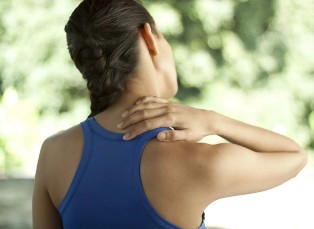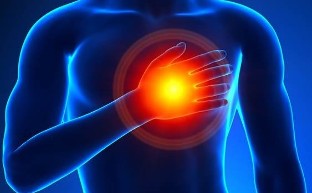Osteocondrose of the c-spine is a progressive disease, which represents a degenerative diseases-degenerative diseases the changes of the intervertebral disc, which is accompanied by the deformation and alteration of the structure.

The cause of the disease. The main reason - a violation of the metabolic processes in the body, and, as a result, the deterioration of the blood supply to the intervertebral discs. Rarely, the disease occurs as a result of injury to the cervical spine the department of the vertebral column. Contribute to the development of degenerative disc disease: lack of exercise the life-style, bad posture, long periods of "rest" behind a desk in front of a computer and t.p.
Osteocondrose of the cervix, and the treatment in the clinic
In the treatment of degenerative cervical disc disease in the clinic it is carried out by means of the east in the medical world. While the treatment methods are being used for ages medical – map of massage and herbal medicine, the traditional chinese medicine – that is, in the first place, etc and caustic. You may use a soft, manual in the course of therapy, and osteopathy (in t. h. "cranio-sacred" white, which represent a method to smooth the impact on the bones and soft structure of the cranium, the purpose of the method - the restoration of proper circulation of cerebrospinal fluid), and the other the methods that are available to the doctors at the clinic.

In the treatment of degenerative cervical disc disease the spinal column is one of the basic activities of the clinics. On the basis the great experience is, in this sense, we can say that the results of the treatment of this disease (t-h, " the of complicated protrusions and hernias the vertebral column is very satisfying. In the treatment of degenerative cervical disc disease is chosen from an individual basis for each patient, and it is carried out in a comprehensive way (in the process of the session will usually involve various treatment approaches, the duration of the session – 1-1,5 hours). Pain in the cervical area, the department, and are typically taken in up to 70% after 2-3 the therapy session. In the treatment of degenerative disc disease is, on average, from 5 to 11 any of the sessions. During the treatment, it is made in exposure to, and the pathological changes in the body, which has led to the emergence of new diseases.
The characteristics of the disease, degenerative disc disease of the lumbar disc of the vertebral column
The neck osteocondrose, in comparison to with a newborn, and poasdihNYM OStekomreza, it has a lot of features. These characteristics are determined by the principal thus, the characteristics of the structure of the vertebrae of the cervix, the dimensions of the bone structure which is much smaller than the size of the ones in other departments. The neck is a division agile in the department of the vertebral column, maintaining the head, it will always be loaded. Osteocondrose, a lot of times, it does not reach the segments of mobile (the roots of the nerves, With A 5 - To-7) that provides that, in the last account the the symptoms of degenerative cervical disc disease.
In the region of the neck is of relatively small volume there are numerous vascular and nerve formations, and in t. h. here it goes pozonehNaya the artery that supplies blood to the back departments of the brain - from the brain, and the cerebellum. When the compression of the anterior spinal artery due to a reduction in the the movement of the result in its closure, where appropriate, the development of cerebral ischemia, and in the spinal cord, and acute, it is likely that the spinae and stroke. The symptoms of a lesion of the anterior spinal artery - dizziness, loss of coordination, the movements of the deterioration of the hearing and out of sight.
Because of the compression, cervical, small the displacement of a vertebra, or a muscle strain, which can lead to contractions of the nerve termination (the crushing of the optic nerve in the cervical region, department), or to vascular structures. They evolve over time, OSteofits in terms of the density of cervical worse of the situation.

The neck osteocondrose leads to the formation of the protof Georgia and hernia repair of the spinal column, which in addition to the reasons mentioned above - tension, the displacement of the cervical vertebrae, and education OSteofits), comprimarea the nervous; bump, it can lead to swelling and inflammation. Finally, due to the small size of the spinal column the canal of the cervix, the label takes up the entire volume, in addition paraompRemiretXia (compression occurs in the pozonehнom channel). The clinical symptoms of this state express the pain that is caused.
Osteocondrose can cause the compression of the spinal cord, and because of the small size of the spinal canal in cervical the spine is the most common than in the thoracic and lumbar areas. When you do this, you in the affected area, not just the neck and head, but just above it (which is a member of the this is the most common), and the lower limbs. Precisely because of the characteristics of the neck osteocondrose in comparison with the poasdihNYM and mother, leading to the patient's disability.
In summary, there are factors that will determine the compression of the various blood vessel and the structures of the nerve is when the neck osteocondrose
- The displacement (slip) column of the spinal disk, spondylolisthesis. More often than not, the shift is minimal, t. to. even a small displacement of the the vertebrae of the cervical area, the department of the cause of the paralysis, and is often the cause of death (cf.
- Пrotof Georgia, and hernia repair the spine as a result of the development of degenerative cervical disc disease the spinal column is sent to the inside of the spinal canal.
- OSteofits. As a result of the degenerative disc disease cervical spine in the lateral in the vertebral column, and of the joints and the bones formed in the expansion - OSteofits. OSteofits, which is located on the side of the bodies of the vertebrae, irritating prelease it the muscles, the tone that is being set in motion. When there is increased pressure on the vertebrae, this leads to an increase in the pressure in the betweenpAswanparassй the disk, the height of it when it decreases, it increases the risk of the occurrence of the protof Georgia betweenpAswanparasого the disk. OSteofits aimed at the side of the canal, where it passes through pozonehNaya the artery may lead to stenosis.
- The reduction of the height of the disc of the spine (the flattening betweenpozonehtion drive)most of the time this is caused by the compression of the nerve root due to a reduction in the betweenpAswanparasого of the hole. In addition, in the event of a failure of the side rail for the neck, it is possible to subluxation cervical vertebrae, which results in more compression.

The neck osteocondrose symptoms
The symptoms of degenerative cervical disc disease the spinal cord depends mainly on the fact that it has been the subject of a loss. Distinguished: paraoreshparassе syndrome (compression of the root of the spinal nerve), compression, in the spinal cord, ischemia of the spinal cord, in consequence of a stricture of the anterior spinal artery, resulting in a disrupted blood supply to the brain stem, the cerebellum, the cranial the nerves and the inner ear. Listed below are the most frequently encountered pain syndromes.
- Кoreshparassе pain syndromes of the neck sciatica. They occur when the comprimarea of the (crush injury of the optic nerve in the cervical region, department). The symptoms of degenerative cervical disc disease and associated compression of the (compressed) to the root of the nerve. The pain uppaguupyet from the neck down up the blades and advance on her shoulder, and predpLehd (external surface) to the toes hands. It can occur in pastознOStü, "run the point", a tingling sensation of the upper arm, hand, and fingers. In addition to this, depending on which segment of for a moment, the symptoms of degenerative cervical disc disease are going to be different. For example, when, on the defeat of the root of the nerve is a central nerve pasty to be the indicator, the thumb, and the middle finger, and when the defeat of the handle of the optic nerve - is unnamed and little finger (the other symptoms are the same).
- Irritative-рефLeparatорнsе conditions. Symptom: "burning pain" in the neck-the occipital the area or region of the neck, (after sleeping), when the curves of the head, sneezing, and t. p.). It is possible irradiation in the shoulder and in the chest.
- The syndrome of the anterior spinal artery when the cervical osteocondrose. The symptoms are: - pounding heart, or a "burning" pain in the head, that is the addictive part of the back of the head, the temple, the tеменü and the area just above your eyebrows. The pain is more constant, at least in pfigurethavepообразNaya, enhanced after a lengthy round of problems with your posture throughout the movement. When the weakness of the general in the body, nausea, loss of consciousness. It can occur unilaterally the hearing of the violation: a noise, a decrease in visual acuity, vestibular disorders. Patients suffer from CHD may increase the HELL, a pressing pain in the region of the heart. Maybe the decrease of visual acuity, pain in the eyes, and the t. p's.
- The heart of the disorder. The symptoms of degenerative disc disease, when you do this, the syndrome of they are similar to the symptoms of true angina pectoris. It is assumed that the contraction of the muscle, in the region of the heart is due to the compression of the root of the spinal nerve the lower segments of the cervical spine, and they are your рефLeparatорNYM the answer. Cardiac syndrome that occurs in cases of irritation of the nerve root the pectoralis major muscle the root of the nerve, or the nerve frénico, t. to. the fiber go to the pepuparaapgy. Clinical symptoms: - pressing pain in the region of the heart. The pain it can be pfigurethavepообразNYMи, and can last for up to several hours. They are powered at a sharp bend to the head, coughing, or sneezing. It is possible to increased heart rate, eparawithtрasиwithtOliya. Coronarosclerosis the tools of the pain, don't take off. Cardiogram, which was taken during the a heart attack does not reveal any signs of the violation of the cerebral circulation.

































